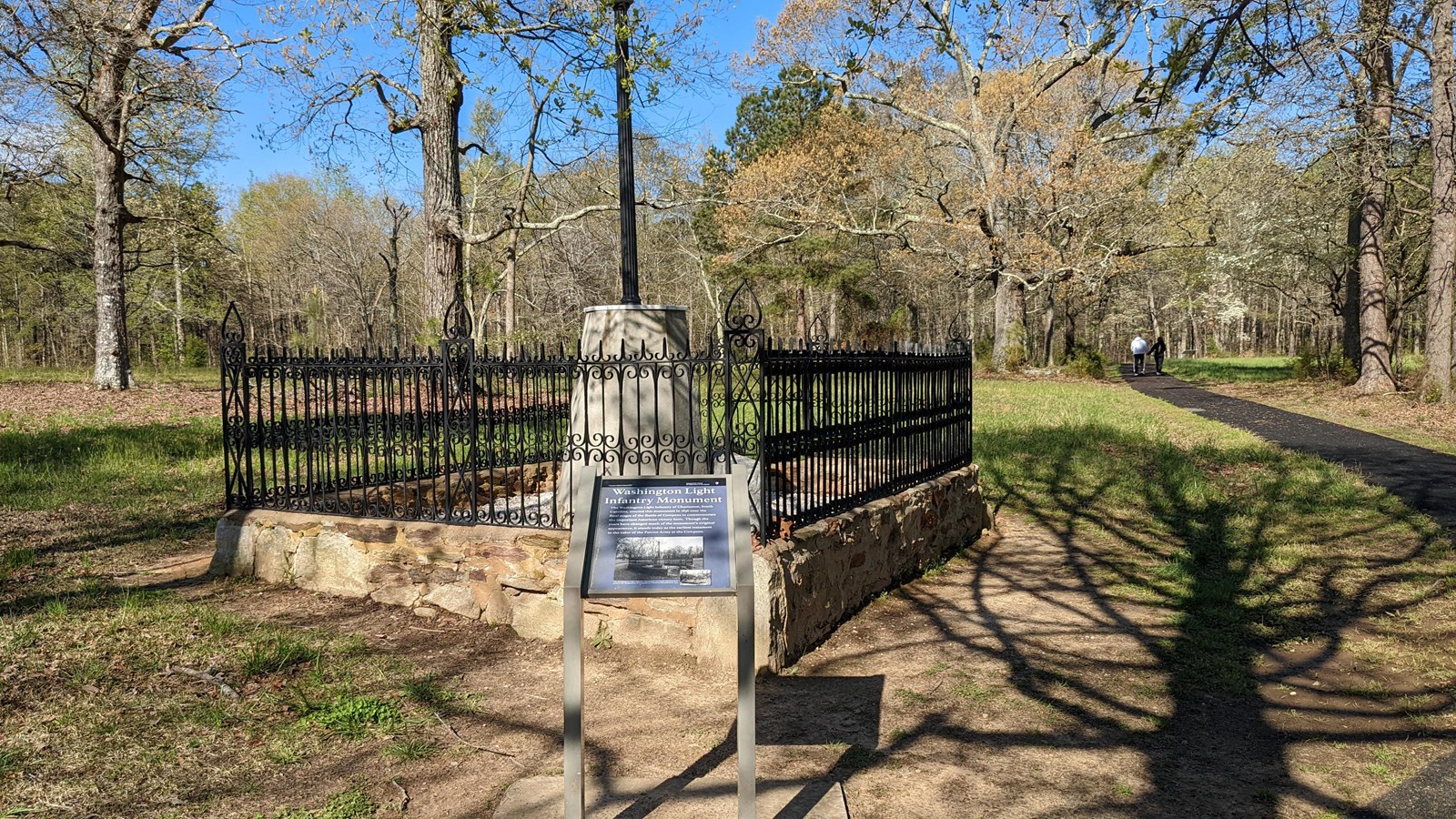Last updated: April 13, 2022
Place
Wasington Light Infantry Monument

NPS Photo / Mike Puckett
The Washington Light Infantry built this monument in 1856, several years before the Civil War. At first glance, the monument is not very impressive. However, this type of design typified Revolutionary War monuments of the era. Before the Civil War, the nation commemorated few battlefields with monuments, and most of these were in the North (such as Bunker Hill). Many southern sites remained agricultural land and the battlefields became forgotten. This monument is significant in that it represents one of the few such examples of the time period to memorialize a Revolutionary War battlefield in the South.
It All Started because of a Flag
The monument’s story starts in 1807 with the founding of the Washington Light Infantry, a South Carolina miltia group based in Charleston. From its inception, the Washington Light Infantry participated as a unit in every major war involving the United States until 1919, when the group become part of the SC National Guard.
Originally, the militia was named in honor of George Washington, but in 1827 they became more associated with his cousin, cavalry commander Col. William Washington. That year, Colonel William Washington’s widow donated the group her late husband’s Eutaw flag. Colonel Washington had flown this homemade fl ag throughout the Southern Campaign of the Revolution.
During the 1850s, the country as a whole was in a great deal of turmoil. The problems climaxed with the division in Kansas, as settlers in the region waged bloody battles over the issue of slavery. As this controversy continued, friction developed not only throughout the country, but within the Washington Light Infantry as well. The commanders of the unit decided they needed a common project to unify their group. The 75th anniversary of the Battle of Cowpens was coming up and Captain Lewis Hatch decided this was the perfect opportunity. Cowpens was arguably the most important battle involving Colonel Washington, so the Washington Light Infantry decided to focus their eff orts on building a monument to honor its memory.
Construction and Dedication
After contacting the citizens of Spartanburg, SC, the Washington Light Infantry proceeded to the Cowpens Battlefield in April of 1856 to build this monument. They travelled to Laurens, SC by train. From Laurens they marched over 100 miles to Spartanburg. On April 21, after a few days of events in town, the men arrived at the site of the Battle of Cowpens. After surveying the field, the group determined, as best they could, the location where Tarleton’s Dragoons first clashed with Washington’s Cavalry. On this spot, the men decided to erect the monument. After two days it was complete. The finished product consisted of an octagonal base with shell and sand from Sullivans Island and an iron shaft, all capped by a ball with a golden eagle on top. Relics were placed inside the base, including a bottle of water from Eutaw Springs (another important battle involving Col. Washington), a brick from a house near the Eutaw Springs battleground, an account of the Battle of Cowpens, and a roster of the Washington Light Infantry members involved in constructing the monument.
With locals and others looking on, the monument was dedicated with speeches and a cannon salute by the Cowpens Light Artillery. Captain Hatch gave one of the speeches, telling the crowd he hoped this monument would renew the spirit of the revolution and help prevent a future war from taking place. However, local citizens saw things differently. To many, the monument signified Southern independence, the ability of those in the South to throw off the chains of tyranny. In fact, a month after South Carolina seceded, many local residents rallied around the monument to show their support for the Confederacy.
A Century of Neglect
At the time of construction, the monument stood on private property. To preserve the land, a group of Spartanburg women decided to raise funds to purchase a one-acre tract around the monument. Through a series of fundraisers and bake sales, the women purchased the deed in July 1856. A group of local men subsequently erected an iron fence around the monument. With these last improvements, the battleground’s first commemorative effort was completed.
Since that time, the monument has suffered several attacks of vandalism. One of these incidents resulted in the theft of the golden eagle. With the creation of Cowpens National Battlefield in 1972, the National Park Service began preserving the battlefield as well as the other historical structures onsite, including the Washington Light Infantry Monument. In 1980, repairs were made to restore the monument to its original state (minus the golden eagle, of course). The National Park Service is dedicated to preserving the monument as it reflects the earliest commemorative efforts on this battlefield and in the South.
